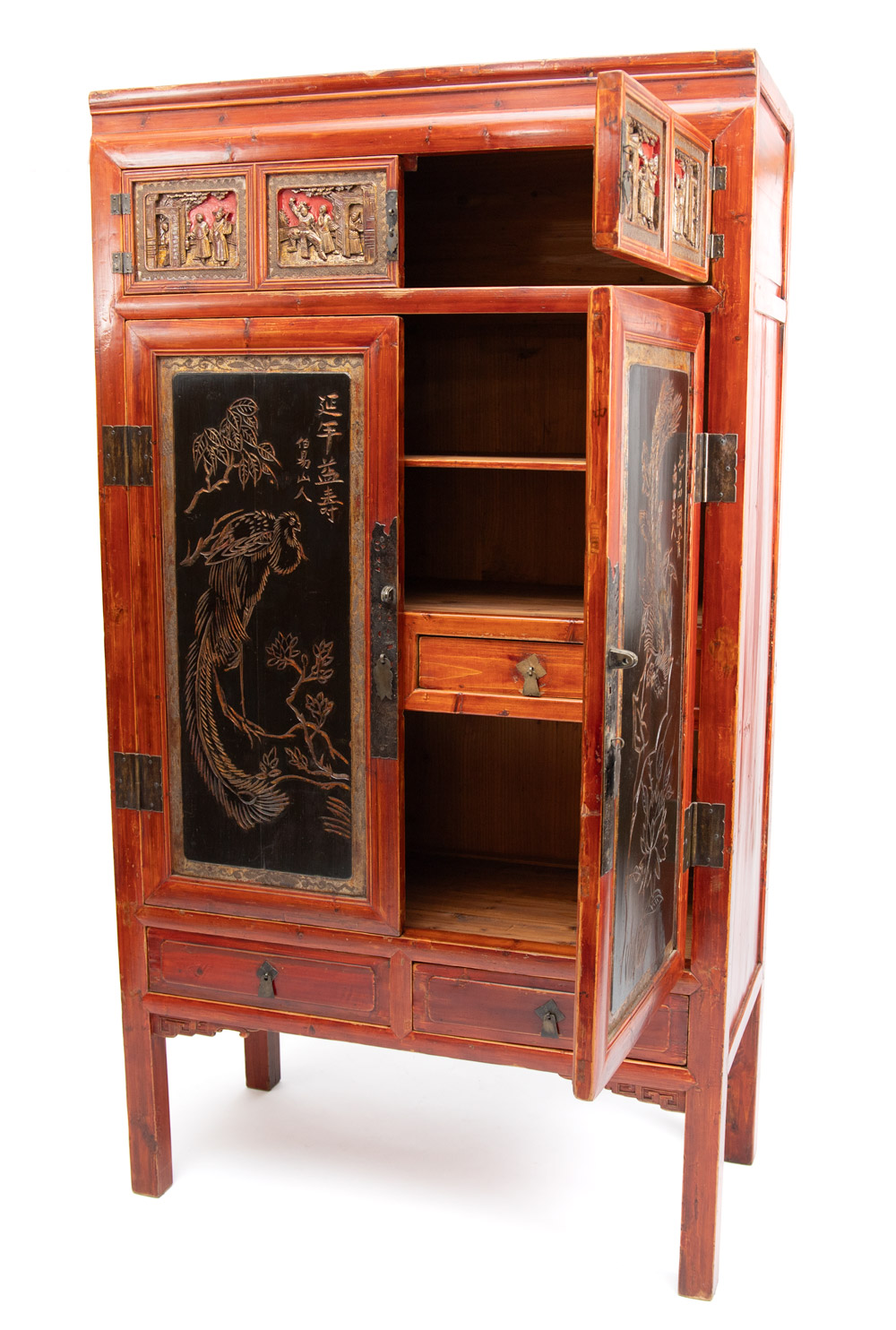Linen cabinet with longevity carving
$4,650.00
Early 20th century
- camphorwood
- 98cm W x 47cm D x 176cm H
Striking piece with carving and calligraphy. A range of storage applications are possible including keeping clothes protected because of the camphorwood.
A shipping fee is calculated to deliver this item to the metropolitan areas of Brisbane, Sydney, Melbourne, Adelaide and Perth. Contact us to arrange a quote for delivery to other areas.








